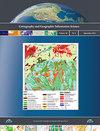Research on map emotional semantics using deep learning approach
IF 2.4
3区 地球科学
Q1 GEOGRAPHY
Cartography and Geographic Information Science
Pub Date : 2023-02-21
DOI:10.1080/15230406.2023.2172081
引用次数: 0
Abstract
ABSTRACT The main purpose of the research on map emotional semantics is to describe and express the emotional responses caused by people observing images through computer technology. Nowadays, map application scenarios tend to be diversified, and the increasing demand for emotional information of map users bring new challenges for cartography. However, the lack of evaluation of emotions in the traditional map drawing process makes it difficult for the resulting maps to reach emotional resonance with map users. The core of solving this problem is to quantify the emotional semantics of maps, it can help mapmakers to better understand map emotions and improve user satisfaction. This paper aims to perform the quantification of map emotional semantics by applying transfer learning methods and the efficient computational power of convolutional neural networks (CNN) to establish the correspondence between visual features and emotions. The main contributions of this paper are as follows: (1) a Map Sentiment Dataset containing five discrete emotion categories; (2) three different CNNs (VGG16, VGG19, and InceptionV3) are applied for map sentiment classification task and evaluated by accuracy performance; (3) six different parameter combinations to conduct experiments that would determine the best combination of learning rate and batch size; and (4) the analysis of visual variables that affect the sentiment of a map according to the chart and visualization results. The experimental results reveal that the proposed method has good accuracy performance (around 88%) and that the emotional semantics of maps have some general rules. Key policy highlights A Map Sentiment Dataset with five discrete emotions is constructed Map emotional semantics are classified by deep learning approaches Visual variables Influencing map sentiment are analyzed.基于深度学习方法的地图情感语义研究
摘要地图情感语义研究的主要目的是通过计算机技术来描述和表达人们观察图像所引起的情感反应。如今,地图应用场景趋于多样化,地图用户对情感信息的需求不断增加,给地图制图带来了新的挑战。然而,在传统的地图绘制过程中,缺乏对情绪的评估,使得生成的地图很难与地图用户达成情感共鸣。解决这个问题的核心是量化地图的情感语义,它可以帮助地图制作者更好地理解地图情感,提高用户满意度。本文旨在通过应用迁移学习方法和卷积神经网络(CNN)的高效计算能力来建立视觉特征和情绪之间的对应关系,对地图情感语义进行量化。本文的主要贡献如下:(1)一个包含五个离散情绪类别的地图情绪数据集;(2) 将三种不同的细胞神经网络(VGG16、VGG19和InceptionV3)应用于地图情感分类任务,并通过准确性性能进行评估;(3) 六种不同的参数组合,以进行实验,从而确定学习率和批量大小的最佳组合;以及(4)根据图表和可视化结果分析影响地图情绪的视觉变量。实验结果表明,该方法具有良好的准确率(约88%),并且地图的情感语义具有一些通用规则。关键政策亮点构建了一个包含五种离散情绪的地图情绪数据集。通过深度学习方法对地图情绪语义进行分类。分析了影响地图情绪的视觉变量。
本文章由计算机程序翻译,如有差异,请以英文原文为准。
求助全文
约1分钟内获得全文
求助全文
来源期刊
CiteScore
5.20
自引率
20.00%
发文量
23
期刊介绍:
Cartography and Geographic Information Science (CaGIS) is the official publication of the Cartography and Geographic Information Society (CaGIS), a member organization of the American Congress on Surveying and Mapping (ACSM). The Cartography and Geographic Information Society supports research, education, and practices that improve the understanding, creation, analysis, and use of maps and geographic information. The society serves as a forum for the exchange of original concepts, techniques, approaches, and experiences by those who design, implement, and use geospatial technologies through the publication of authoritative articles and international papers.

 求助内容:
求助内容: 应助结果提醒方式:
应助结果提醒方式:


